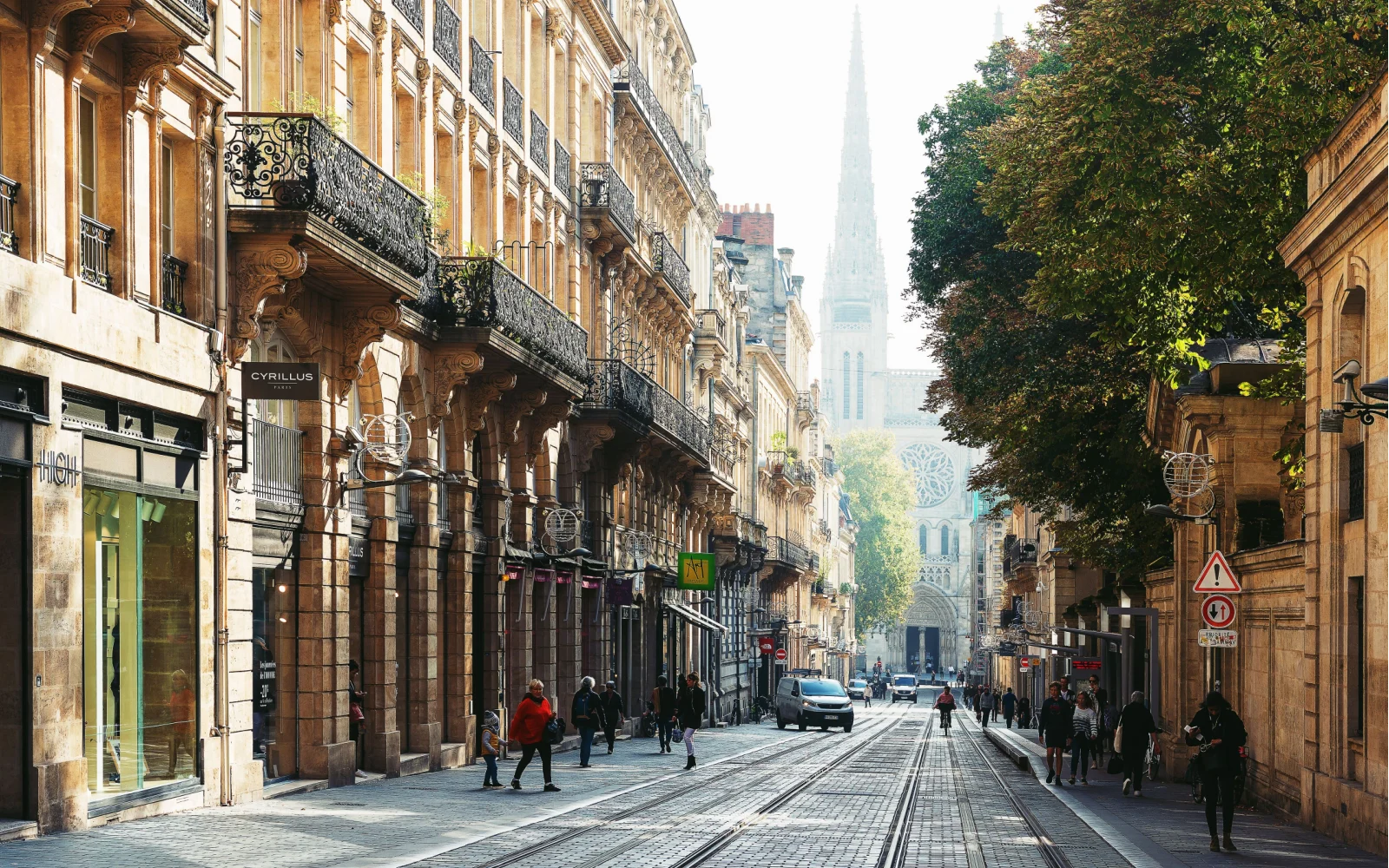France has a reputation for being chic, historic, and refined, from its laid-back countryside and beaches to the world-famous cities of Paris and Bordeaux. We’ll show you the best places to visit in France to get a taste of the country’s most iconic and visit-worthy spots!
Get ready for good food and wine, endless days of sightseeing and exploring historic architecture, charming villages in the French countryside, and sandy beaches along the French Riviera when you know all the destination highlights to hit on your trip to France.
15 of the Best Places to Visit in France
France has so much to offer, no matter what kind of experience you’re seeking when you visit. World-class museums and art galleries, tantalizing cuisine and wine, natural beauty, cosmopolitan elegance — you name it, you can find it in France.
Here are the 15 best places to visit in France to give you a well-rounded sense of the country as a whole. You’ll find that while Paris is certainly an amazing city to explore, it’s far from being the only place worth seeing in France.
1. Paris
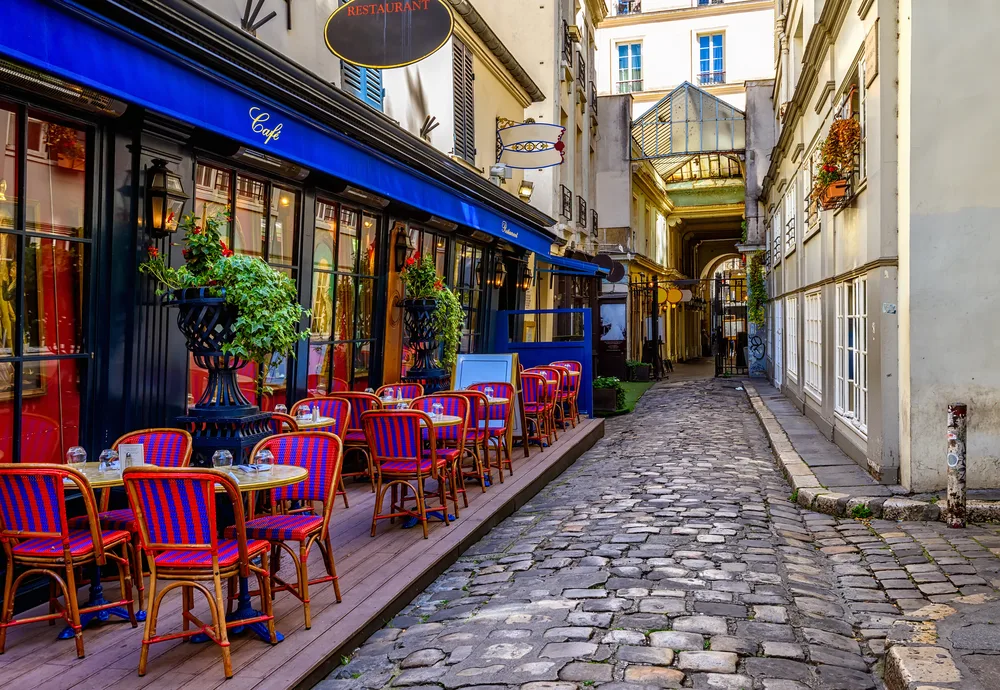
Catarina Belova/Shutterstock
The romance and history of Paris make it a magnet for travelers. Iconic attractions, like the Eiffel Tower, Arc de Triomphe, and Louvre Museum on the banks of the Seine, are must-see stops on your Parisian itinerary.
Explore the lush Tuileries Garden on your way to the bustling Place de le Concorde square. Stroll the charming Montmartre neighborhood to grab a baguette, cheese, and wine for a picnic lunch on the banks of the river.
See the Eiffel Tower, famous cathedrals, and tour the hallowed halls of the Louvre’s massive art and history collections. Enjoy a meal at a sidewalk cafe or bistro, shop boutiques and haute fashion stores, and revel in the magic of the city of lights.
2. Marseille
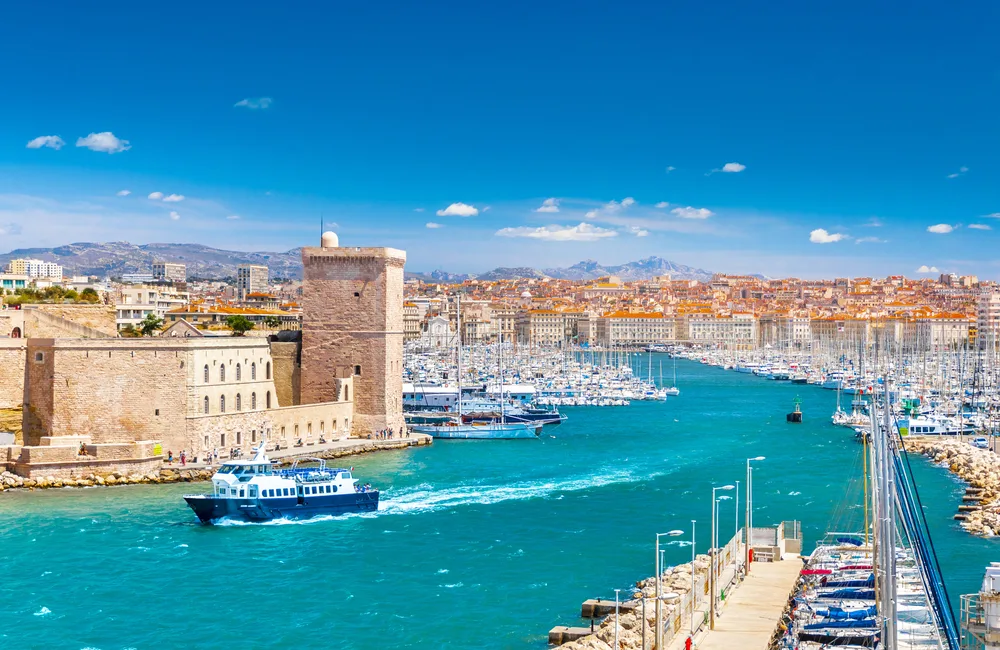
Proslgn/Shutterstock
Marseille sits in the Provence region of South France and boasts some incredible churches, palaces, parks, and military forts to explore. Food, wine, beer, galleries, and museums will fill your time in beautiful Marseilles.
This port city is famous for its walkable Old Port, Vieux-Port, where amazing architecture still stands. Big yachts bob in the marina with cafes, bistros, and restaurants lining the shore along with Fort Saint-Jean, Opera de Marseille, and Saint-Laurent Church.
From the fort, you can head over to the 4th-century Cathédrale La Major. Wander the historic, cobblestone streets of the Le Panier district — like an open-air museum — and poke around in the Centre de la Vieille Charité museum.
Visit the Romanesque Basilique Notre-Dame-de-la-Garde church, stroll the lovely Parc Émile Duclaux and Palais du Pharo, then walk over to Plage des Catalans and down to the Plage Prada for gorgeous sea views.
The pedestrian street Canebiere offers a wide selection of ethnic restaurants and street food, while the Musée Regards de Provence and Musée des beaux Arts in Palais Longchamps are excellent art museums.
3. Nice
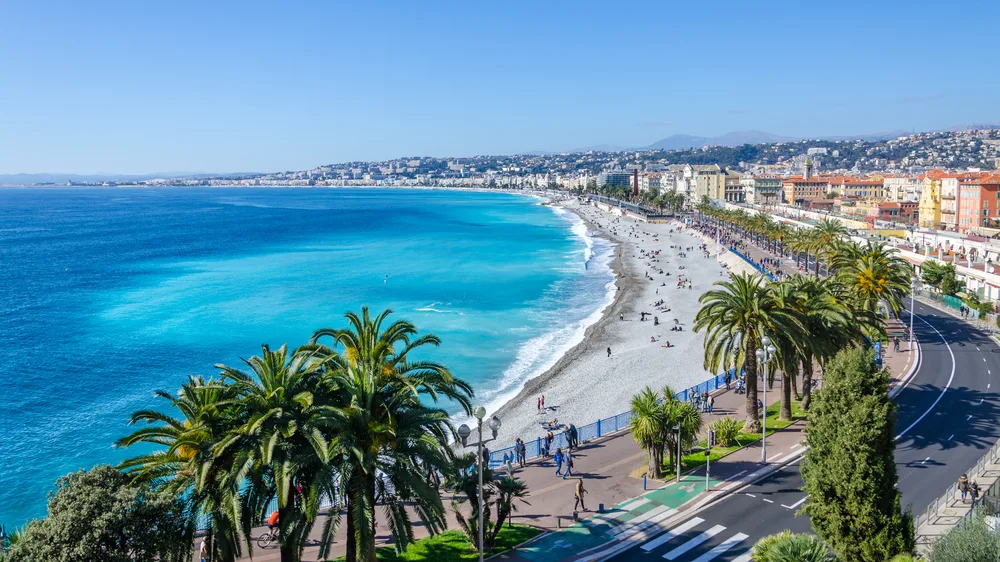
Sergii Zinko/Shutterstock
Situated on the sunny and chic French Riviera, Nice offers a distinct experience that’s a bit different from other parts of France. It’s the Italian and Greek influences, pebbled beaches, an Old City, and castles that make it such a fascinating place to visit.
Vieux Nice, the old town, has the cobblestone streets and colorful buildings you’d picture in an old, charming French city. Shops, markets, and restaurants fill the old buildings with flowers, soaps, and cheeses for sale while the Parc de la Colline du Château looks over the region from its hilltop setting.
Castle Hill is where you’ll find the 11th-century Castle of Nice, a former military citadel that looks down onto the bay and port with a cafe. If you’re in a historic mood, check out Musée Matisse (Henri Matisse paintings) and Musée Marc Chagall (Marc Chagall works).
To explore religious history, look no further than the 17th-century Nice Cathedral and the Russian-Revival style Saint Nicolas Cathedral for a little something different.
Head to some of Nice’s beaches, like Plage Beau Rivage by Vieux Nice and Ruhl Plage for a glimpse of what the French Riviera used to be like, as you relax on the pebbly shores.
4. Loire Valley
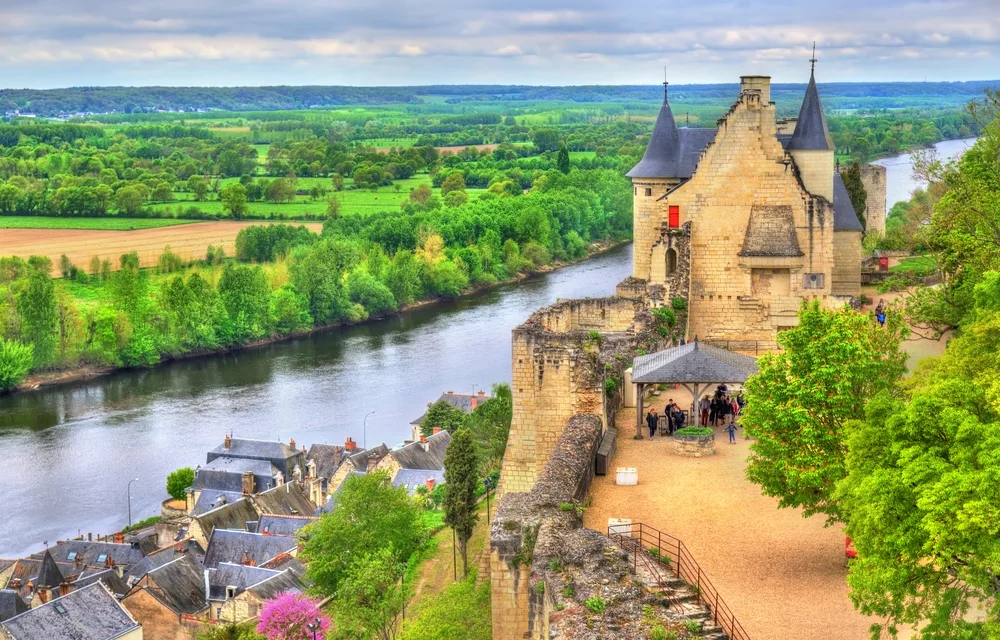
Leonid Andronov/Shutterstock
The scenic Loire Valley is one of our favorite places to visit in France, offering an undulating landscape of medieval villages nestled among lush green and wildflowers, rivers, manicured parks, wineries, and the biggest draw: Castles.
There are more than 300 castles, or châteaux, in the Loire Valley, each one offering its own distinct flavor of the opulent Renaissance style. You’ll find them in Angers, Amboise, Chinon, Orleans, and Tours, to name a few, like Château d’Angers and Château de Montrésor.
Pick a town as your basecamp to tour the valley region, which includes medieval villages like Loches, charming French towns like Montresor, and bustling cities with wineries and tasting rooms in Orleans and Tours.
Make your way around the valley to visit its many wineries through the countryside and tasting rooms in the cities. Rent a bike to ride along the La Grande Levée d’Anjou for amazing views of the river and surrounding valley.
Stop to dine in a unique-to-the-area Troglodyte cave restaurant (historic cave dwellings transformed into atmospheric eateries and bars) for fouée, or wood-fired bread rolls, and hearty French cuisine.
5. St. Tropez
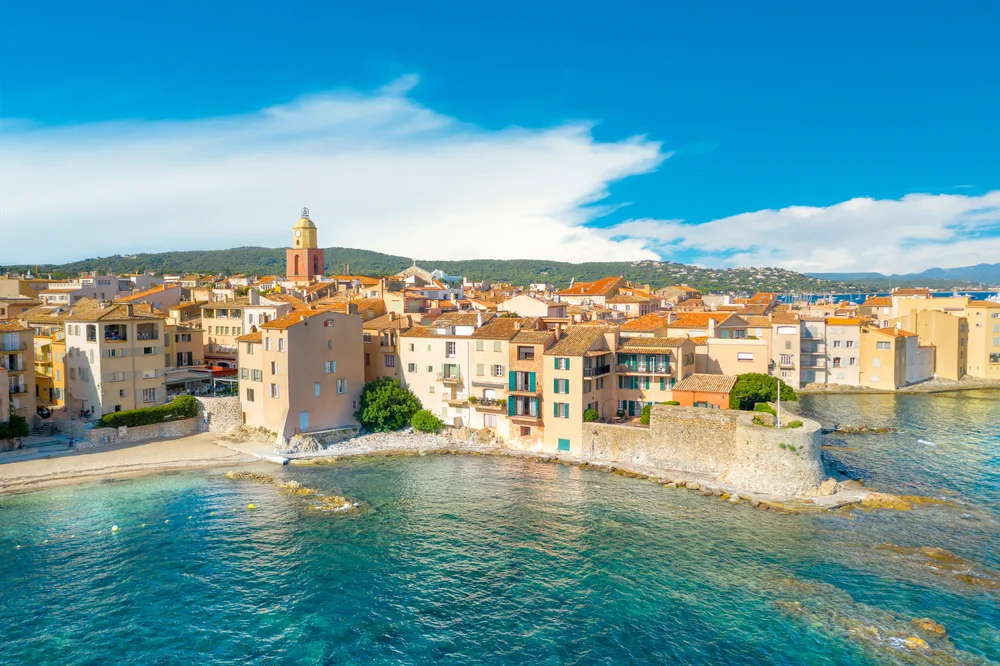
Proslgn/Shutterstock
The French Riviera’s beautiful St. Tropez is a dreamy beach destination and really comes to life in the sizzle of summer. It’s an artsy city on the Mediterranean Sea in South France with notable nightlife and incredible beaches to lounge and play on.
The city has its own Old Port, or Vieux Port, with deep roots as a fishing port (La Ponche) that still features its original cobblestone streets. Cafes, bistros, and high-end shops like Chanel and Hermes make it the perfect spot for people-watching with a cup of coffee, sandwich, or glass of wine.
The main stretch of beach to check out is Pampelonne and Nikki Beach, where beachfront villas grace the sands and make great places to stay for a quick walk down to the sand. Tahiti Plage has a nude section (avoid or venture in if you desire).
Check out the renowned Club 55 or Byblos Beach Club for lunch. Nikki Beach is the hotspot for nightlife as DJs, musicians, and tourists clad in designer duds arrive for all-night parties (and expensive cocktails) at the beach clubs.
There are excellent restaurants all around St. Tropez, so pick one with great scenery (like La Tigre) to set your experience off. Visit the 400-year old Citadelle de Saint-Tropez maritime museum and the film museum, Musée de la Gendarmerie et du Cinéma, for a dose of sightseeing.
6. Provence
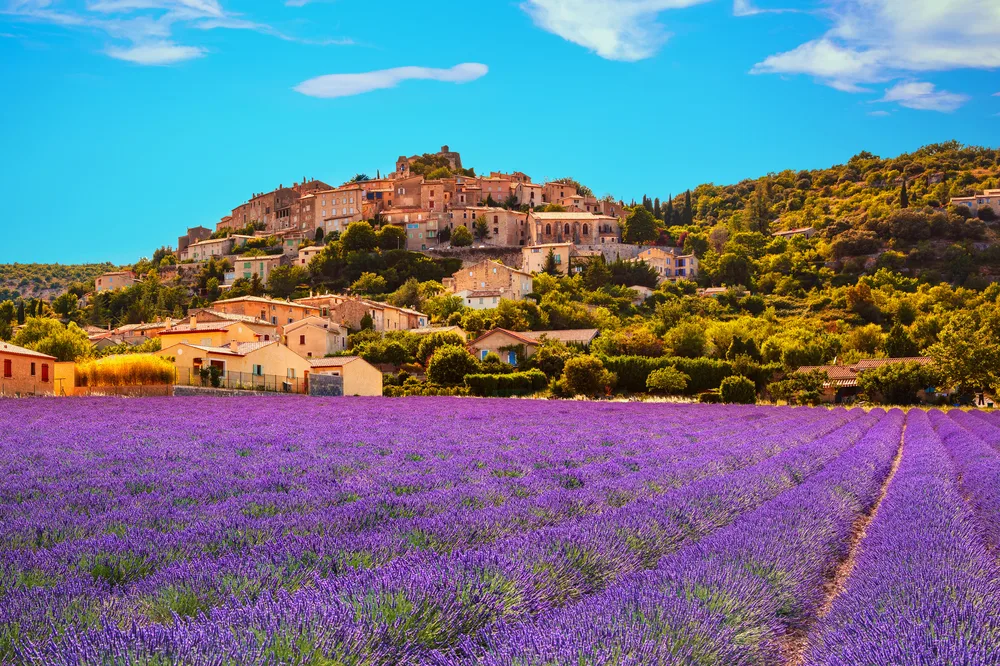
StevanZZ/Shutterstock
Spanning from the southern Mediterranean Sea coast and the Rhône River to the Italian border, the Provence region is famous for its endless fields of purple lavender, wine, food, and serene countryside.
Vineyards, olive groves, lavender, and sunflowers fill the green spaces of Provence, making it seem like you’ve walked into a picturesque painting. The classic French food here is phenomenal. It’s the birthplace of ratatouille, bouillabaisse, and tapenade.
This is a more agrarian glimpse of France, but it’s far from boring. Take the Cotes du Rhone Route des Vin wine trail to sample regional wines and varieties grown on the rolling hills of Provence. Art, bistros and cafes, culture, and scenery await you every leg of the journey!
Towns and charming villages like Gorges de Verdon, Avignon, Saint Paul de Vence, Saint-Rémy-de-Provence, and Aix-en-Provence are scattered through the scenic region and so interesting to explore.
Avignon has the medieval Gothic Pope’s Palace and puts you close to the Cotes du Rhone Route des Vin wine trail. Head to Saint Paul de Vence from here, one of the region’s oldest medieval towns with lots of vineyards, the 16th-century Chapelle Saint Michel, and cobblestone lanes.
Go hiking between secluded beaches with high rocky cliffs in Parc National du Calanques, visit Saint-Rémy-de-Provence for beautiful mountain views and cool Van Gogh and Nostradamus history, and end in Aix-en-Provence for its fountains, parks, and museums with easy train access to Paris, Marseille, and Lyon.
7. Cannes
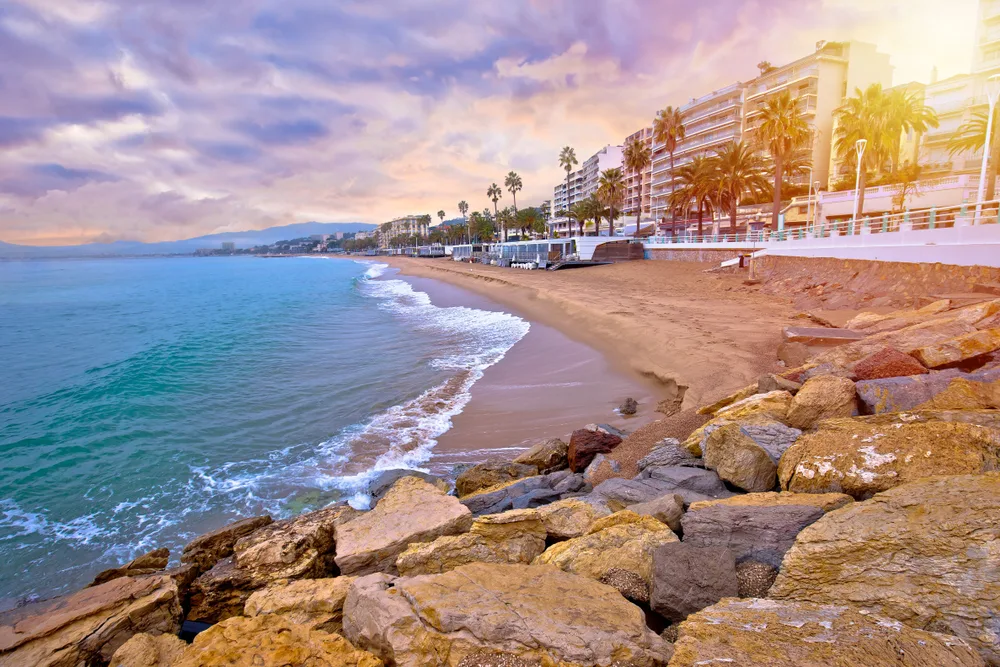
xbrchx/Shutterstock
Always associated with its famous film festival, Festival de Cannes, Cannes has much more to offer than annual cinema screenings. Located on the French Riviera on the Mediterranean, it boasts lovely sandy beaches, an array of eateries and shops, and upscale hotels.
Cannes is a high-end destination that’s not cheap to visit, but if you’re looking for luxury on the Mediterranean coast of southern France, this is where you’ll find it. The city itself is small and walkable, so you’ll have a lot of fun just taking in the coastal sights and Old Town, Le Suquet.
Hilltop Le Suquet has the old cobblestone roads and bistros, boutiques, and sea views you’d expect in a high-caliber French coastal city. The shops and eateries bustle with activity during the warmer months and you’ll find endless things to eat, drink, and buy here!
Stroll the coastal Boulevard de la Croisette to find the perfect stretch of sandy beach to relax on. Check out the red carpet of the Palais des Festivals et des Congrès, where the film festival is held each year, with the Cannes Walk of Fame.
Hit up the Marché Forville in the city center, a bustling market with flowers, French goods, and seafood. Head to the medieval tower-housed Musée des Explorations du Monde for art and music history, then dine at any of the Michelin-starred restaurants around the city.
8. French Alps

Lukas Hodon/Shutterstock
The French Alps region is where you’ll witness France’s highest elevations with picturesque alpine scenery, villages, lakes, bridges, and towns with rich architectural history you can tour.
Queryas Natural Regional Park sits near the Italian border and one of the highest villages in Europe, the pedestrian-only Saint-Véran, is located at its heart. Taste French food and local white Burgundy wine, admire the old fountains, and see traditional alpine log homes dotting the slopes.
You’ll encounter a number of scenic towns and communes in the French Alps, like La Grave ski resort on La Meije with huge glaciers, the Lautaret Alpine Garden near Villar-d’Arêne, France’s highest town, the medieval Briançon, Annecy, and Grenoble.
Annecy is the Venice of the French Alps and its Vieille Ville (old town) has cobblestone streets, canals, and colorful pastel homes with a medieval castle (Château d’Annecy, now a museum) and beautiful views of the mountains, Thiou River, and Lake Annecy.
On the way to Grenoble, pass through the Beaufortain and Tarentaise valleys to see their stunning villages, like Beaufort and Sainte-Foy de Tarentaise, with ornate Baroque architecture and old abbeys.
Grenoble will be a highlight of your visit with its La Bastille military fort on a hill and cable car rides to the top right from the center of town. It’s on two rivers and the views of the surrounding Alps makes it truly breathtaking, especially when it’s warm with wildflowers and meadows all around.
9. Lyon
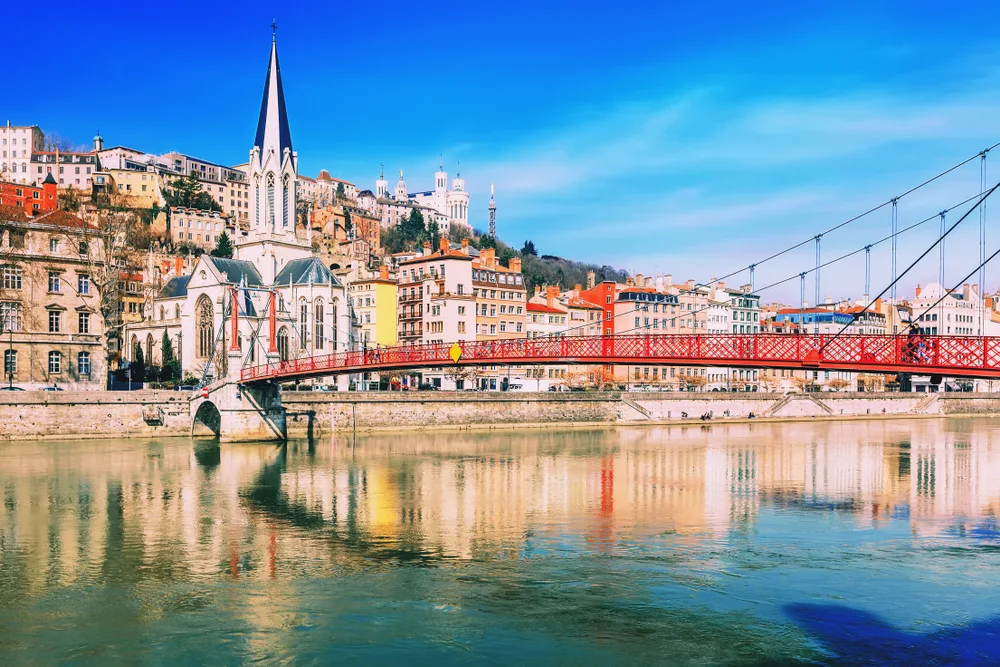
Tianalima/Shutterstock
Lyon is known as a foodie city in France, located northwest of the French Alps and surrounded by stunning hills and distant peaks. It’s a major city that doesn’t quite have the charm factor of smaller alpine villages or quaint Provencal towns, but it’s truly a gem in France.
See the Roman-era Ancient Theatre of Fourvière in the city’s UNESCO historic center, Vieux Lyon. There’s an amazing astronomical clock at the medieval-era Cathédrale Saint-Jean-Baptiste and several Renaissance mansions, restaurants, and wine bars to explore.
Explore the Musee des Confluences, then take a funicular from the old town to Fourvière to see the Basilica of Notre Dame of Fourvière, meander beautiful gardens, and tour the medieval area.
The indoor Halles Market is where you can taste Lyon’s best gourmet flavors from a variety of chefs, butchers, farmers, and more. Head to the old silk-working district, La Croix-Rousse, for historic murals, silk-making demos at Maison des Canuts, and stroll the lively boulevard for bakeries, galleries, and wine bars.
You can take hidden passage tour that begins in La Croix-Rousse to Hôtel de Ville and find all the secrets of this storied city. Between the Town Hall and Jardin des Plantes along the way, you’ll find lots of bars and restaurants to check out.
The food is fantastic in Lyon, and for some, it’s a big reason to visit. Le Musée is a favorite spot near the Saint-Nizier church, the classic Lyon bouchon experience (shared tables), and chef-led tours of the district’s back alley behind the restaurant after lunch.
10. Burgundy
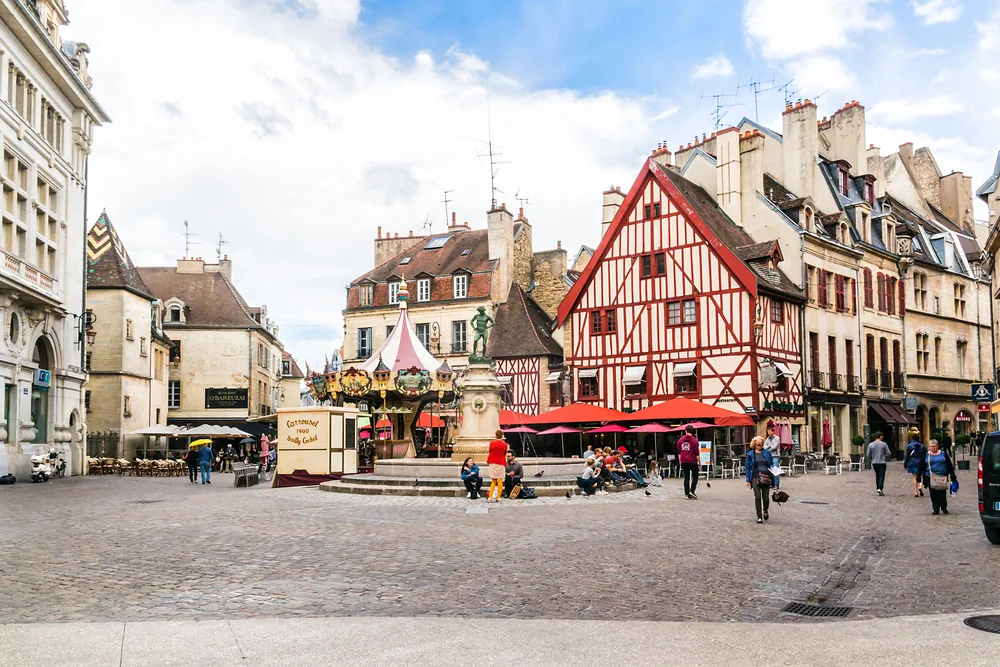
DIJON, FRANCE – JUNE 15, 2016: In Old Town of Dijon. Dijon is the capital city of the historical Burgundy region in eastern France, founded by the Romans/Kiev.Victor/Shutterstock
Known for the famous regional Burgundy wines, France’s Burgundy region is one of the best places to visit in the country if you’re a wine connoisseur or just enjoy beautiful scenery and charming towns.
Burgundy, Chardonnay, pinot noir, and Beaujolais are all wines that hail from this lush and fertile region that’s connected by canals and studded with impressive castles, or chateaux. You’ll find a number of cities and towns to explore within the area.
Dijon (yes, the birthplace of the mustard) is one of the best with the 14th-century Palais des Ducs, wine cellars like La Cave de la Cite, Michelin-starred eateries like ORIGINE par Tomofumi Uchimura, palatial hotels, and vineyards in serene, bucolic pastures.
Beaune is another jewel in Burgundy’s crown, offering excellent dining and wine options with the highest concentration of tasting rooms and domaines. The 15th-century Hôtel-Dieu de Beaune, a former hospital, is open for guided tours.
Check out Nuits-Saint-Georges for biking trails and wine caves, while the small towns like Morey-Saint-Denis and Vougeot are ideal for bike rides, tasting rooms, small wineries, and sightseeing in charming settings.
11. Normandy
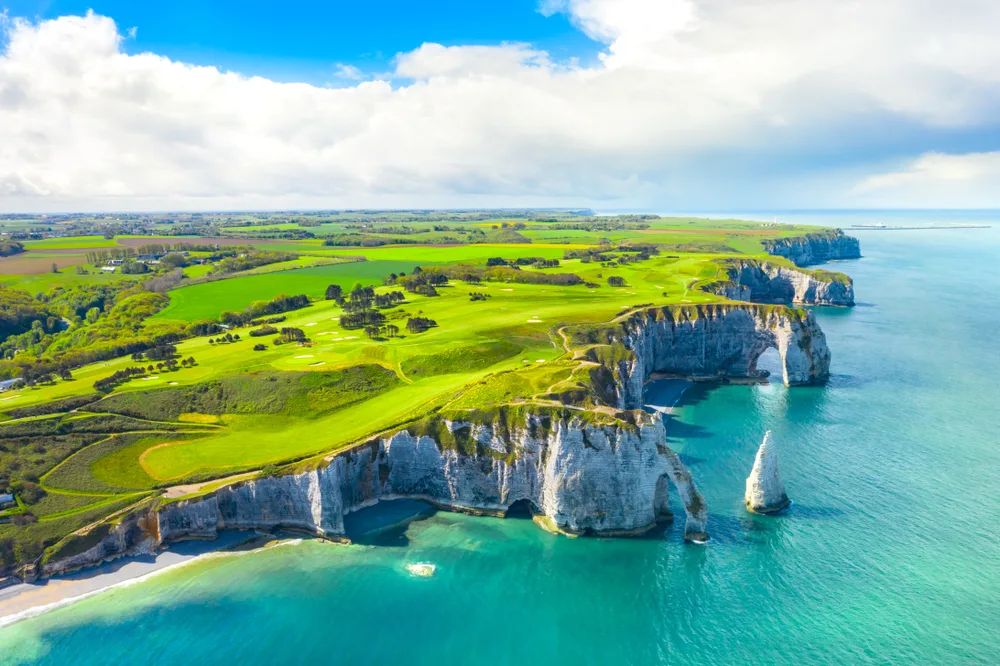
Proslgn/Shutterstock
World War II history buffs can’t miss a trip to Normandy, a region that played a major role in the war and still has the battle scars and memorial sites to show for it. From the beaches that were stormed on D-Day to cemeteries and beautiful scenery, Normandy is an amazing place to visit in France.
Omaha Beach is where the Allied soldiers landed on D-Day, and you can go there today for a solemn moment of remembrance of their bravery and determination. The Normandy American Cemetery overlooks the landing beach.
You can see Mont-Saint-Michel, an island just offshore, and its towering Gothic church from the beach. Charming small towns like Caen and Bayeux demand your attention with highlights like the Bayeux Tapestry, embroidered with a visual depiction of the history leading up to the Battle of Hastings.
Caen is home to the stately, hilltop Château de Caen castle from 1060 and fantastic examples of Romanesque architecture in the twin abbeys on either side of the castle. There’s a WWII museum, Caen Memorial Museum, that can add a lot to your visit.
Explore Rouen and its Cathédrale Notre-Dame de Rouen (the site of Joan of Arc’s execution), try local butters and cheeses from Normandy’s dairy cows, and enjoy some apple cider or Calvados brandy to live like a local.
Normandy is known for its delicious dairy products, so try some of the region’s famous cheeses and butter. And, of course, wash it all down with a glass of Calvados, the local apple brandy.
12. Bordeaux
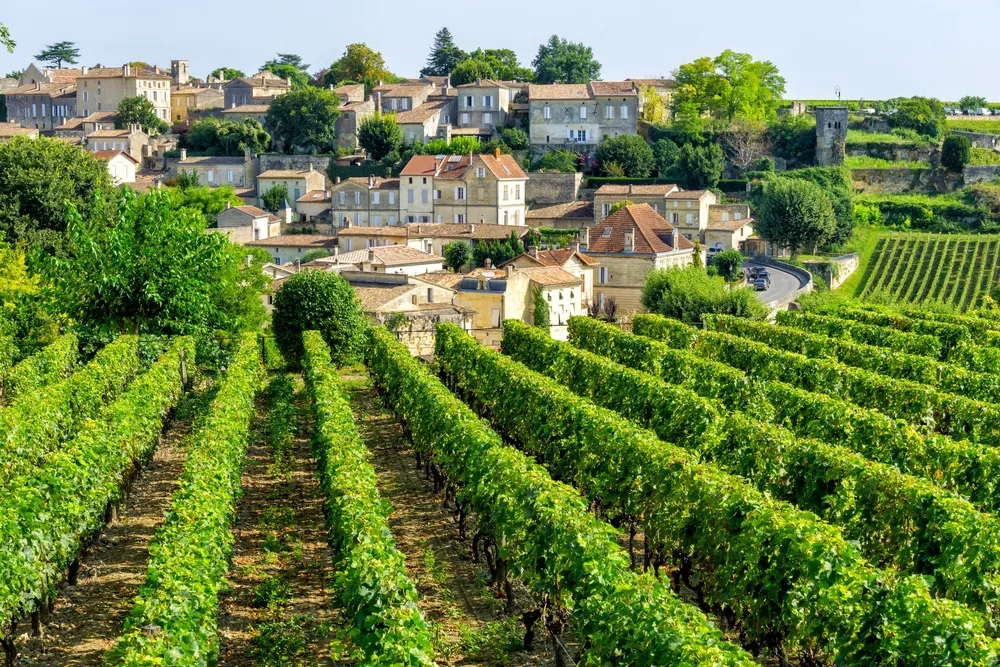
Laraslk/Shutterstock
Like Burgundy, the Bordeaux is also famous for vineyards and wines. It’s home to stunning examples of Gothic architecture, a wide array of art and history museums, a refined French feel with fountains and parks, and excellent seafood-centric French dishes.
You’ll marvel at the detail and imposing stature of the 12th-century Cathédrale Saint-André, built in Gothic style near Town Hall. Manicured gardens are scattered along the riverfront, making the place feel like an elegant trip back in time.
Three Graces Fountain in Place de la Bourse square sits above the world’s biggest reflecting pool, Miroir d’eau, and the surrounding promenade is captivating to stroll through. Seafood restaurants are everywhere, and all restaurants have extensive wine lists.
Walk Rue St. Catherine for a great mix of shops, restaurants, and wine bars serving regional varieties. Two squares, Place Saint Projet and Place Camille Julian, are perfect for stopping by a sidewalk bistro for a lazy lunch and people-watching.
Head to the Musée des Beaux-Arts de Bordeaux to browse centuries of artwork from famed and regional artists, and consider a short trip to St. Emillion to taste wines and take bike tours through vineyards.
13. Mont Saint-Michel
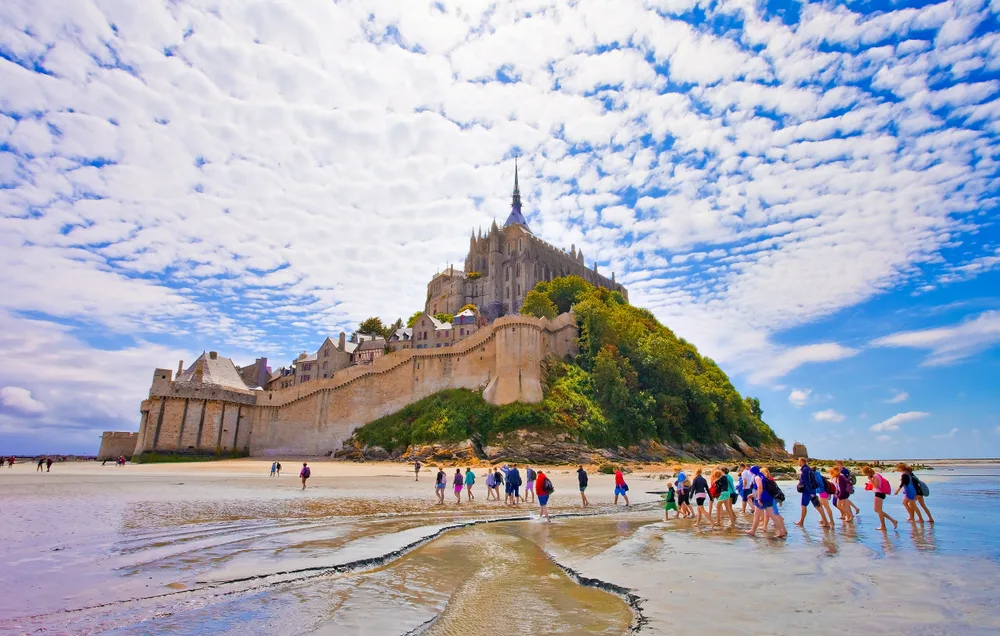
Andrew Quinou/Shutterstock
Located in the Normandy region, Mont-Saint-Michel is a rocky offshore island that’s dominated by the impressive Abbey of Mont-Saint-Michel, a beautiful Gothic-style abbey that seems to reach the skies with its pointed spires.
The 14th-century military fortifications — towers, walls, and ramparts — around the island are noteworthy and worth exploring. France’s history is laid out in the defensive structures erected from the Hundred Years War here.
But the island is much older than the 14th century. All the way back in 708, an oratory was originally built here following a bishop’s vision of the archangel, Michael.
A hilly medieval-era main street, Grande Rue, is absolutely charming to stroll on a sunny day for shops and restaurants, while biking around the Baie du Mont-Saint-Michel (which has been part of the Tour de France) is memorable.
Grab an omelet at La Mère Poulard (1888 inn/restaurant), where the eggs are delicately cooked in a copper skillet over a flame while you watch. If you see agneau de pré salé on a menu around here, try it — it’s locally raised lamb with a distinct salty taste from the ocean’s effects on their grazing grounds.
14. Corsica
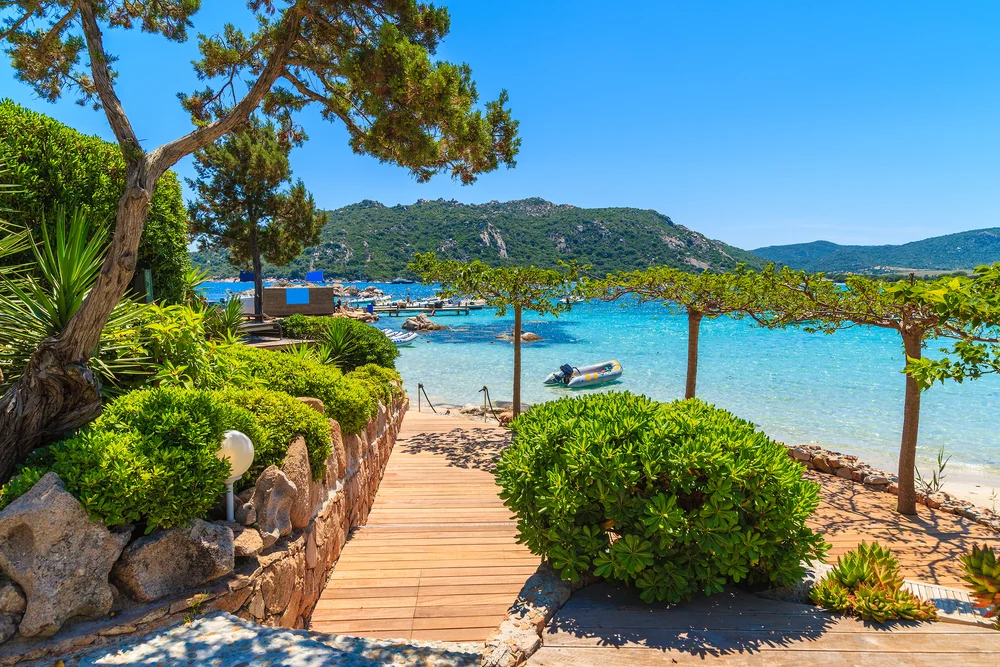
Pawel Kazmierczak/Shutterstock
For a totally different view of France, head to Corsica, a mountain-crowned island in the Mediterranean Sea that boasts gorgeous shoreline, hiking trails through rugged forests, and an Italian-influenced culture that makes it a breath of fresh air on a France tour.
A large part of the island (around 40%) is encompassed by the Corsica Regional Nature Park and its extensive hiking trails, which protects the natural beauty from lakes and mountains to waterfalls plunging into deep gorges.
Sophisticated little towns dot Corsica’s coasts and make any visit feel luxe and cosmopolitan. You can hang out on pristine beaches, like Saleccia (check out the Parc de Saleccia, too) or Pietracorbara. Adventure is never far on Corsica, with hiking, mountain climbing, canyoning, and swimming all around you.
Bavella Massif and Spelunca gorge hikes are exhilarating, while you can hike a few trails before taking a refreshing dip at the Fango Delta. Climb a mountain in Restonica, go cliff diving in Bonifacio, and see the stunning red rocks and cliff beaches of the Calanques de Piana.
Take a day cruise along the Corsica coast to charming towns like Scandola, Girolata and Calanques de Piana, check out the natural swimming pool at Capo Rosso, and explore the Scandola Nature Reserve while you’re here.
15. Brittany
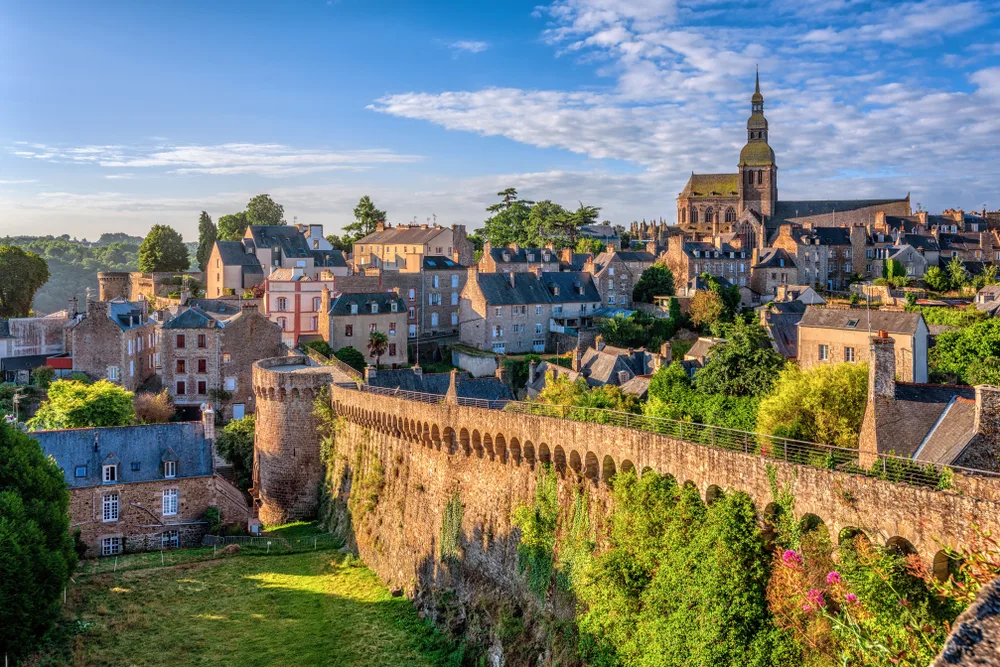
Boris Stroujko/Shutterstock
The hilly and lush coastal Brittany region is known for its natural beauty and beach resort towns that make it a favorite place to get away in France. Standing stones, or menhirs, are all around the region and date back to prehistoric times.
Saint-Malo is one of the port cities here, surrounded completely by imposing walls of granite and home to the impressive Gothic/Romanesque Saint-Malo Cathedral in its Old Town. You can see a pirate’s (privateer, technically) home-turned-museum at La Demeure de Corsaire.
Dinan, another town in Brittany, has charming cobblestone streets, ramparts from medieval times, and half-timbered homes that give it an old European feel. Rightfully so, as the 14th-century Dinan Castle and an artillery tower sit here in the oldest part of town.
You’ll find some great restaurants around Brittany, many of which will serve crepes Bretonne and the famous artisanal Breton cider, thanks to the apple orchards that thrive in the region.
Hike from Cap Fréhel to the Fort la Latte castle for incredible views along the way and get two special Breton destinations ticked off your list. Check out beaches surrounding Plouha, including the sandy Plage de Brehec and pebbled Plage du Palus.
See a 15th-century Danse Macabre fresco in Chapelle de Kermaria an Iskuit, take a guided trip into the enchanted Huelgoat forest before visiting the 17th-century sun-worshipping Chapel of Saint-Michel de Brasparts with views of the Arrée Mountains’ Tuchenn Mikael peak.
Things to Consider
What should you keep in mind before you start planning your trip to the best places to visit in France? Here’s our list of important considerations to take that’ll make your visit that much more enjoyable!
- Study the language. The French language can be difficult to learn, but you can master a few helpful phrases and words to make your travel experience a bit easier and less stressful. Download a language-learning app to start learning now, or plan to use Google Translate on your trip to communicate when you can’t find an English speaker around.
- Rely on public transportation. France is well-connected by rail and tram, making your travels so much more convenient — when you know how to use them and what routes to take! Language definitely plays into the ease of using the public transit, so make sure you know where you’re heading and pay attention when your stop comes up.
- Know when to rent a car. Some of the best places to visit in France are in wide-spread areas and regions that are best visited with the help of a rental car. While the railways are extensive, they don’t go everywhere! Do some research before you settle on an area and determine whether or not a rental car is needed (and study up on French road rules).
- Opt for guided tours when you can. Doing lots of research will help you have a more educational and seamless trip, but even then, guides that live and work in the areas you’re visiting will have a wider knowledge base to enlighten you on your visit. If there’s an option to have a certified guide lead you through a museum, cathedral, Old Town, or region, take them up on the offer to get more out of the trip.
Frequently Asked Questions
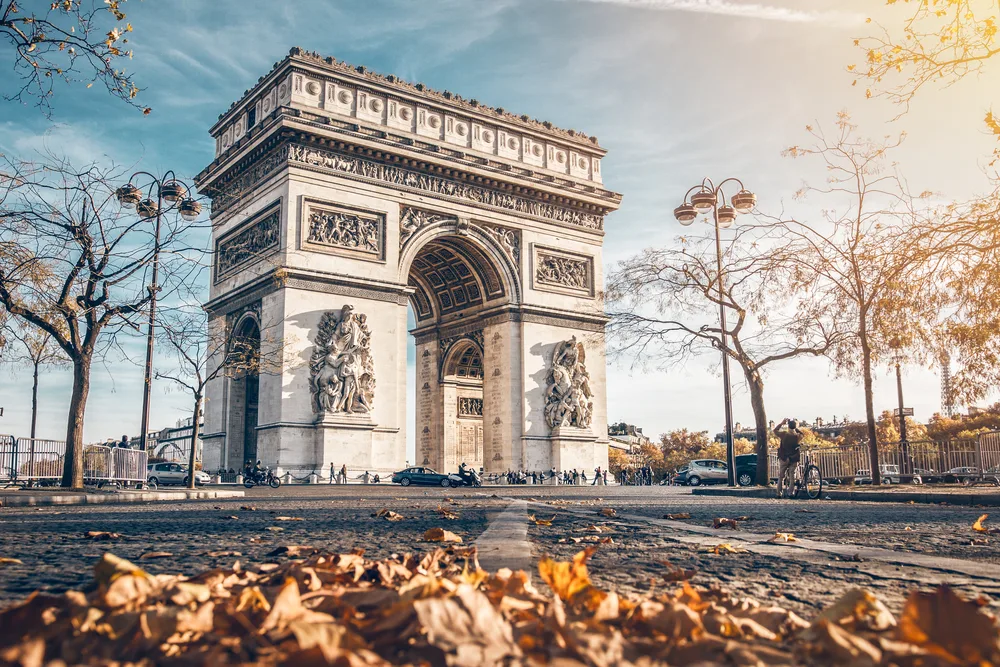
Jakub Barzycki/Shutterstock
Lingering questions about the best places to visit in France can easily be resolved by taking a look at the most commonly asked questions from fellow travelers. Check them out below!
Which is the most beautiful part of France?
It’s hard to imagine a more beautiful part of France than the sloping hills, lavender fields, and vineyards of the Provence region. Provence bursts into color and bloom with sunflowers, lavender, olive groves, and grape vines in the warm months and its meadows and hills light up in verdant green.
The classic French dishes that originated here are phenomenal to taste, like ratatouille, and the charming villages in the countryside make perfect places to stroll around for old architecture, bakeries, shops, and fountains.
What part of France should I visit?
If you can only visit one part of France, it should be the Île-de-France region that includes Paris and surrounding scenic pasture landscapes with forests, meadows, and farms. Paris is where the most iconic attractions are, like the Eiffel Tower, Louvre Museum, Notre-Dame de Paris, and Arc de Triomphe.
Visiting Île-de-France puts you in the heart of the country in the central-northern sector with the most abundant options for entertainment, dining, and shopping. From swanky brand names to sidewalk bistros, it’s one of our favorite places to visit in France.
Where should I go for the first time in France?
You should go to Paris for your first time in France, but ideally, you’ll be able to spend a few days touring the Normandy region (great WWII history, museums, and Gothic cathedrals) and the Loire Valley for stunning French castles and wineries.
With at least 3 days in Paris, 2 in Normandy, and 2 in the Loire Valley, you’ll have an incredible week to spend in France as a first-time visitor without feeling like you’ve missed out on anything in this historic country.
Which is the most beautiful city in France?
While many consider Paris to be the most beautiful city in France, there are many that surpass its charm and wonder with gorgeous landscapes, equally-impressive architecture, and even coastal bliss on the Mediterranean shores.
Marseille is undeniably charming with its cobblestone streets, beautiful mountain and sea views, and historic old town filled with shops and bistros next to stretches of beaches. Saint-Véran in the French Alps has unmatched beauty with surrounding peaks, valleys, fountains, and wooden alpine log cabins on the slopes.
What is the coolest town in France?
The coolest town in France could be Lyon, which is a famous foodie destination with some of the country’s best eateries and wine bars. French cuisine has Lyon to thank for some of its most iconic dishes, like bouillabaisse and tapenade, and the city has a neat network of secret passageways through its old silk-working district, La Croix-Rousse.
You’ll find Roman theater ruins, a Russian-Revival church in its opulent style, Renaissance mansions, and a funicular that runs from the historic center up to the hilltop Basilica of Notre Dame of Fourvière in Lyon.
So, What Are the Best Places to Visit in France?
The best places to visit in France take you from the shining city of Paris to the sunny Mediterranean shores of the French Riviera, the alpine charm of the French Alps, the bucolic hills and pastures of the wine and Provencal regions, and into the rugged and scenic islands just off the coast.
Iconic architecture and landmarks, coastal and mountain villages with French charm, and an amazing array of bistros, Michelin-starred restaurants, and swanky wine bars are waiting for you in the soulfully historic country of France. You’ll be ready to come back the moment you leave!



